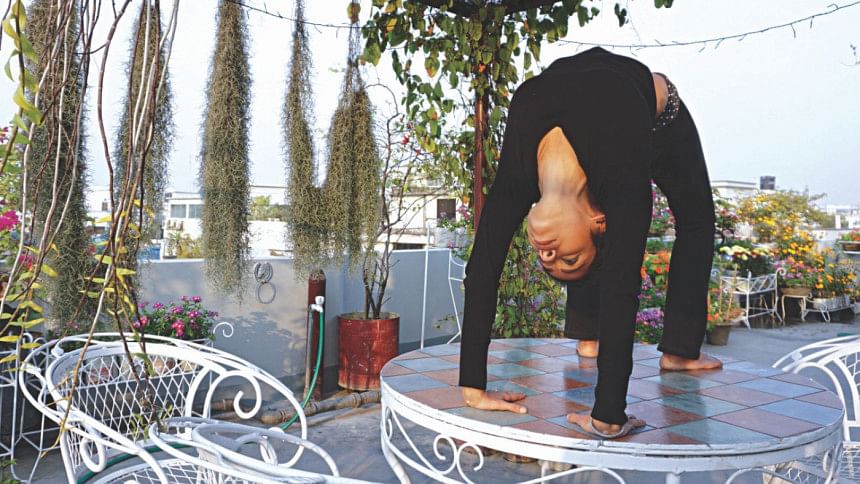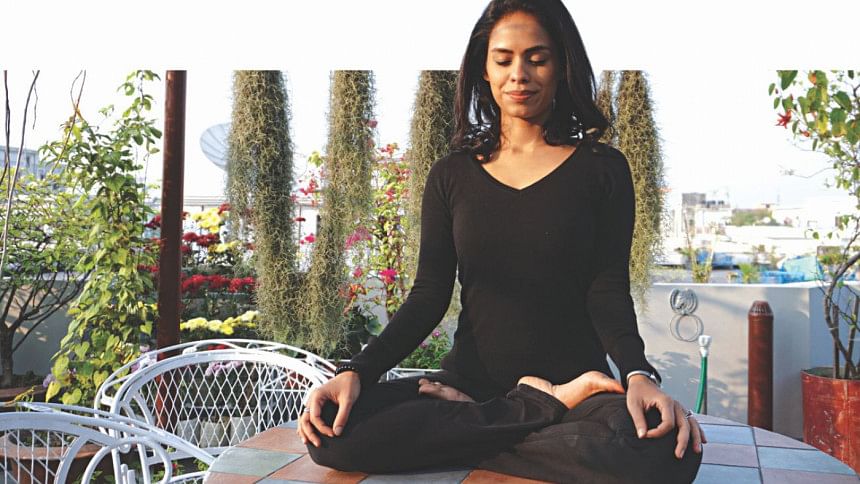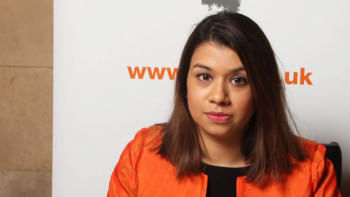Becoming Strong in Mind and Body

It is no mystery that encouraging people to become physically fit from an early age, make healthy life choices, and establish healthy routines for life has turned crucial, especially as the hurly-burly of Dhaka city leaves people in a state of frustration and vulnerability. Being active allows us to gain more confidence, become healthier and happier, and more comfortable with exercising. The healthy routines we establish and the knowledge we gain serve us for the rest of our life. The twenty first century, alongside rapidly changing technology, has brought on a great deal of stress on majority of people, especially the youth. Combatting stress and other fitness issues has become central to the benefit of our community and the world at large.
Yoga is emerging as one of the most effective ways for a healthier life. Historically, yoga is not just one technique of teaching – it is a lifestyle and culture that surpasses meditation and posture techniques and includes good eating habits, self-care habits, work, and socialisation. However, understanding the different forms of yoga and the various benefits of yoga can be confusing. We spoke to Ulfath Kuddus, a young yogini, about what she does to make her classes exciting and engaging for her students, and the ways in which yoga makes us strong in mind and body.
Ulfath grew up in Bangladesh, and lived in Chittagong for a while before moving to Dhaka. She has a double major in International Relations and Management from Thailand, and an MA in Education Leadership and Management from London. Ulfath currently works at Pixiel and Playgroup. Alongside fulfilling her role as an early childhood professional at the school, yoga is something she welcomes into her lifestyle dedicatedly.
Her interest in yoga sparked quite early. Her mother taught herself yoga, and was an avid follower of Jane Fonda's workout regime in the 80s, following tapes and renting VCRs. Ulfath would join in, and really started enjoying yoga from an early age. “I started practicing yoga on my own when I was 16, finding books and instructional videos, and attending classes, both locally, and where ever we travelled, continuing on when I went to university. Over the years the internet became my teacher as well and it continues to be so even today,” says Ulfath. Aside from her mother, her Philosophy teacher, who Ulfath describes as one of the most positive people she knows, and someone who credited this significantly to “physical happiness”, and later on, one of her instructors in Dhaka- Shazia Omar, were some of the key people who inspired her to stay committed to yoga.
She received her Yoga Teacher Training at the Ananda Ashram right outside Katmandu in a place called Matatirtha in Nepal. The accommodations and environment of the ashram were very simple. “During my time at the ashram, I wanted as little distraction as possible, limiting contact with friends and family, allowing my easily distracted self to focus and be as calm as possible,” says Ulfath.
Ulfath teaches private yoga classes and hosts few classes at her home two to three times a week. She also currently teaches at a club. She is trained in Hatha Shivananda Yoga, a classic approach to yogaic breathing exercises and postures. She incorporates many different forms of yoga in her practice, including Vinyasa, in which students coordinate movement with breath to flow from one pose to the next, and Ashtanga, that follows a specific sequence of postures synchronising breath and movement, making it a class pure to no one school in particular.

She believes that yoga is for everyone, and thus a class should have a fun and friendly atmosphere, where practitioners can come together from a variety of places and backgrounds, and still be a part of a community. Ulfath says, “I want practitioners to feel a sense of accomplishment after each session, and be inspired to push themselves a bit further in order to achieve an overall healthier life.” On a typical day at Ulfath's class, students start off before practice begins casually talking about their day, or their frustrations, something that excited them and many other things, before everyone switches off their phones, coming on to their mats and focusing on their breaths, and visualising how they want to feel. This is followed by some rounds of pranayama, some yogic breathing exercises. The asana (postures) practice starts off with various sun salutations, a series of postures that warms, strengthens, and aligns the entire body. This is followed by a sequence of various postures. “I try to vary the routine a little so no two classes are exactly the same that week, so focusing on a specific part of the body more one day than the others, or coming up with a sequence of movements- a flow- together with the class,” says Ulfath. The class ends with a form of guided meditation or the students quietly laying on their backs in savasana (corpse pose), before ending with a round of applause in appreciation of everyone's part in the day's practice. Often, some practitioners go for dinner or coffee together afterwards.“It can sometimes feel like there isn't necessarily much to do for people in Dhaka,” states Ulfath. Coming back to Dhaka after her undergraduate degree, she found herself feeling the same. “I then found a Pilates class that I really loved, which became the highlight of my week and a significant part of my social life, automatically leading to the creation of relationships,” says Ulfath.
Although today Ulfath is an accomplished instructor, she had to overcome many challenges on her road to learning and teaching yoga. Initially when learning, being restricted to just books and videos was one of the challenges for Ulfath. She found it difficult to really get into certain postures without physical guidance, and injuries were frequent. Finding teachers later who could physically show the various postures and talk about the breathing techniques to accompany each posture majorly improved her knowledge. Ulfath also says that as a teacher it is still difficult for her to find suitable spaces to host classes, despite the wide variety of clubs and gyms in Dhaka now. She further adds, “Being able to build and maintain a continuous growing community was also difficult- not everyone would make it to class regularly because of work, traffic or other issues. Having said that, over the past two years, a small, yet consistent group of practitioners have been coming together regularly, and it really has been feeling like a community.” She explains that yoga is no short-term fix, and in order to reap the maximum benefits of it, we must maintain regular practice.
There is an interrelation between the mind and body that people often tend to neglect. To this day, when talking about yoga, people mainly refer to the physiological benefits of it – and there are many. “Yoga helps with increasing flexibility and muscle strength, and reduces pain,” says Ulfath. She further adds that yoga improves the cardio vascular function of the body, helps with balancing metabolism, improves physical and emotional balance, and helps with performance in sports and even with protection from injuries. However, not enough is mentioned about the mental benefits of the practice. “Yoga helps us not only to lose weight- something that seems to be the primary goal of many practitioners as opposed to staying healthy and fit which may very well include gaining weight – but also helps us calm our minds and feel more positive by releasing chemicals like endorphin that improve our mood,” Ulfath says. The more sedentary we become, the less effective our body is in response to stress. “Regular practice of yoga or any exercise for that matter, be it indoors or outdoors, is related to greater feelings of revitalisation, improved sleep, positive engagement, and increased energy, together with decreases in tension, depression, and other mental health issues,” Ulfath explains. Our nutrition also contributes to our physical, mental, and emotional well-being, which are all central points of yoga. Ulfath advises her students to have a healthy balanced diet,drink plenty of water, avoid sugar, and eat plenty of fresh fruits and vegetables. Above all she says, it is vital to learn, know and listen to your body.
While yoga helps with flexibility and strength, Ulfath explains that adding simple lifestyle choices and exercises such as taking the stairs instead of the elevator, walking instead of getting into a car, riding a bicycle as a means of transportation, and standing as opposed to sitting all day at our desks, can further improve our quality of life. From the exercise to the diet, yoga can be the catalyst to turning over a new and healthier chapter in our life.

 For all latest news, follow The Daily Star's Google News channel.
For all latest news, follow The Daily Star's Google News channel. 



Comments